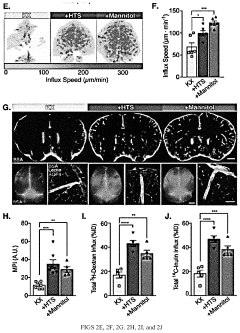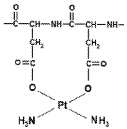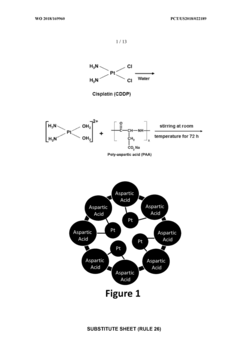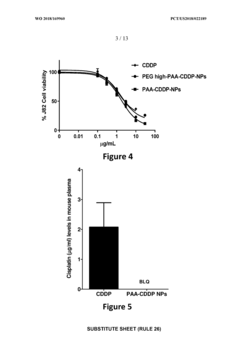How to Improve Drug Delivery with Hypertonic Solutions?
Hypertonic Solutions in Drug Delivery: Background and Objectives
Hypertonic solutions have emerged as a promising approach in the field of drug delivery, offering potential advantages in enhancing therapeutic efficacy and overcoming physiological barriers. The concept of utilizing hypertonic solutions for drug delivery has its roots in the fundamental principles of osmosis and cellular physiology. Over the past few decades, researchers have increasingly explored the application of hypertonic solutions to improve drug absorption, distribution, and overall bioavailability.
The evolution of this technology can be traced back to early observations of osmotic effects on cellular membranes and tissue permeability. As our understanding of cell biology and pharmacokinetics advanced, scientists began to recognize the potential of manipulating osmotic gradients to facilitate drug transport across biological barriers. This realization led to a surge in research efforts aimed at harnessing the power of hypertonic solutions for therapeutic purposes.
The primary objective of employing hypertonic solutions in drug delivery is to enhance the penetration and absorption of pharmaceutical compounds across various physiological barriers. These barriers, such as the blood-brain barrier, gastrointestinal epithelium, and dermal layers, often pose significant challenges to conventional drug delivery methods. By creating an osmotic gradient, hypertonic solutions can potentially increase the permeability of these barriers, allowing for improved drug uptake and distribution.
Another key goal in this field is to develop targeted delivery systems that can selectively increase drug concentrations at specific sites of action while minimizing systemic exposure. This approach holds promise for reducing side effects and improving the therapeutic index of various medications. Additionally, researchers aim to optimize the formulation and administration of hypertonic solutions to ensure their safety, efficacy, and practicality in clinical settings.
The technological trajectory in this domain has seen a shift from simple hypertonic saline solutions to more sophisticated formulations incorporating various osmotic agents and drug carriers. Recent advancements have focused on developing smart delivery systems that can respond to physiological cues and release drugs in a controlled manner. These innovations are driven by the growing demand for more effective and patient-friendly drug delivery methods across a wide range of therapeutic areas.
As we look to the future, the field of hypertonic solutions in drug delivery continues to evolve, with ongoing research exploring novel applications and refining existing techniques. The integration of nanotechnology, advanced materials science, and precision medicine approaches is expected to further expand the potential of this technology, potentially revolutionizing the way we administer and target therapeutic agents in the human body.
Market Analysis for Hypertonic Drug Delivery Systems
The global market for hypertonic drug delivery systems is experiencing significant growth, driven by the increasing prevalence of chronic diseases and the need for more effective drug administration methods. This market segment is expected to expand at a robust rate over the next five years, with a particular focus on applications in oncology, respiratory diseases, and central nervous system disorders.
Hypertonic solutions offer several advantages in drug delivery, including enhanced absorption rates, improved bioavailability, and the potential for targeted delivery to specific tissues or organs. These benefits have attracted substantial interest from pharmaceutical companies and healthcare providers, leading to increased investment in research and development of hypertonic drug delivery technologies.
The market for hypertonic drug delivery systems can be segmented based on route of administration, with inhalation, oral, and parenteral delivery methods being the primary focus areas. Inhalation-based hypertonic solutions have gained traction in the treatment of respiratory conditions such as cystic fibrosis, while oral and parenteral formulations are being explored for a wide range of therapeutic applications.
Geographically, North America and Europe currently dominate the market for hypertonic drug delivery systems, owing to well-established healthcare infrastructure, high R&D investments, and favorable regulatory environments. However, the Asia-Pacific region is expected to witness the fastest growth in the coming years, driven by increasing healthcare expenditure, rising awareness of advanced drug delivery technologies, and a growing patient population.
Key market players in the hypertonic drug delivery space include pharmaceutical giants such as Pfizer, GlaxoSmithKline, and Novartis, as well as specialized drug delivery companies like Nektar Therapeutics and Catalent. These companies are actively engaged in developing innovative hypertonic formulations and delivery devices to gain a competitive edge in the market.
The market is also witnessing a trend towards strategic collaborations between pharmaceutical companies and drug delivery technology providers. These partnerships aim to leverage complementary expertise and resources to accelerate the development and commercialization of novel hypertonic drug delivery solutions.
Challenges in the market include regulatory hurdles, particularly for novel delivery methods, and the need for extensive clinical trials to demonstrate the safety and efficacy of hypertonic formulations. Additionally, the high cost of developing and manufacturing specialized delivery devices may limit market growth in some regions.
Despite these challenges, the overall outlook for the hypertonic drug delivery systems market remains positive. The growing demand for targeted and efficient drug delivery methods, coupled with ongoing technological advancements, is expected to drive continued innovation and market expansion in the coming years.
Current Challenges in Hypertonic Drug Delivery
Hypertonic drug delivery systems face several significant challenges that hinder their widespread adoption and efficacy. One of the primary obstacles is the potential for tissue damage and irritation at the administration site. The high osmolarity of hypertonic solutions can lead to local dehydration, causing discomfort and, in some cases, cellular damage. This issue is particularly pronounced in sensitive areas such as mucosal tissues, limiting the application of hypertonic drug delivery in certain therapeutic contexts.
Another critical challenge is the rapid clearance of hypertonic solutions from the site of administration. The body's natural homeostatic mechanisms work to quickly dilute and remove these solutions, reducing their contact time with target tissues and potentially diminishing therapeutic efficacy. This rapid clearance necessitates frequent dosing or higher drug concentrations, which can lead to increased side effects and patient non-compliance.
The formulation stability of hypertonic drug solutions presents additional complications. High solute concentrations can affect the chemical stability of active pharmaceutical ingredients, potentially leading to degradation or reduced shelf life. Moreover, the viscosity of hypertonic solutions can be problematic, affecting both the ease of administration and the drug's ability to penetrate target tissues effectively.
Bioavailability issues also pose significant hurdles in hypertonic drug delivery. The altered osmotic environment can impact drug absorption and distribution, potentially leading to unpredictable pharmacokinetics. This variability can make it challenging to achieve consistent therapeutic outcomes across different patient populations and administration routes.
Furthermore, the development of appropriate delivery devices and technologies for hypertonic solutions remains a challenge. Standard delivery systems may not be suitable for the unique properties of these formulations, necessitating the design of specialized devices that can withstand high osmotic pressures and ensure accurate dosing.
Regulatory hurdles present another layer of complexity. The unique characteristics of hypertonic drug delivery systems often require extensive safety and efficacy studies, prolonging the development timeline and increasing costs. Regulatory bodies may require additional data to address concerns about local tissue effects and systemic impacts of hypertonic formulations.
Lastly, patient acceptability and compliance remain significant challenges. The potential for discomfort or irritation at the administration site can deter patients from adhering to treatment regimens, particularly in chronic conditions requiring long-term therapy. Addressing these patient-centric concerns is crucial for the successful implementation of hypertonic drug delivery strategies in clinical practice.
Existing Hypertonic Drug Delivery Techniques
01 Hypertonic solutions for enhanced drug delivery
Hypertonic solutions are used to improve drug delivery by creating an osmotic gradient that enhances the absorption and distribution of therapeutic agents. These solutions can increase the permeability of biological membranes, allowing for better penetration of drugs into target tissues. This approach is particularly useful for delivering drugs across barriers such as the blood-brain barrier or for improving topical drug absorption.- Hypertonic solutions for enhanced drug delivery: Hypertonic solutions are used to improve drug delivery by creating an osmotic gradient that enhances the absorption and distribution of therapeutic agents. These solutions can increase the permeability of biological membranes, allowing for better penetration of drugs into target tissues. This approach is particularly useful for delivering drugs across barriers such as the blood-brain barrier or for topical applications.
- Controlled release systems using hypertonic solutions: Hypertonic solutions are incorporated into controlled release drug delivery systems to modulate the release rate of active ingredients. The osmotic pressure generated by these solutions can drive the release of drugs from specialized formulations or devices. This approach allows for sustained and targeted drug delivery, potentially reducing dosing frequency and improving therapeutic outcomes.
- Nasal and pulmonary drug delivery with hypertonic solutions: Hypertonic solutions are utilized in nasal and pulmonary drug delivery systems to enhance the absorption of drugs through mucosal surfaces. The hyperosmolarity of these solutions can temporarily open tight junctions between epithelial cells, facilitating the passage of therapeutic agents. This method is particularly effective for delivering peptides, proteins, and other large molecules that are typically challenging to administer.
- Hypertonic solutions for wound healing and tissue regeneration: Hypertonic solutions are applied in wound healing and tissue regeneration therapies to create an osmotic gradient that promotes fluid movement and nutrient delivery to damaged tissues. These solutions can help in debriding wounds, reducing edema, and enhancing the delivery of growth factors and other therapeutic agents to accelerate healing processes.
- Combination of hypertonic solutions with nanocarriers: Hypertonic solutions are combined with nanocarriers to create advanced drug delivery systems. The hypertonic environment can enhance the uptake and intracellular delivery of nanoparticles loaded with therapeutic agents. This synergistic approach improves the efficacy of nanomedicine by increasing cellular penetration and drug accumulation in target tissues.
02 Controlled release systems using hypertonic solutions
Hypertonic solutions are incorporated into controlled release drug delivery systems to modulate the release rate of active pharmaceutical ingredients. The osmotic pressure generated by these solutions can drive the release of drugs from specialized formulations or devices, allowing for sustained and targeted drug delivery over extended periods. This approach is beneficial for maintaining therapeutic drug levels and improving patient compliance.Expand Specific Solutions03 Nasal and pulmonary drug delivery using hypertonic solutions
Hypertonic solutions are employed in nasal and pulmonary drug delivery systems to enhance the absorption of drugs through mucosal membranes. The hyperosmolarity of these solutions can temporarily open tight junctions between epithelial cells, facilitating the passage of therapeutic agents. This method is particularly effective for delivering peptides, proteins, and other large molecules that are typically challenging to administer through conventional routes.Expand Specific Solutions04 Hypertonic solutions for wound healing and tissue regeneration
Hypertonic solutions are utilized in wound healing applications to create an osmotic gradient that promotes the removal of excess fluid from wounded tissues. This approach can enhance the delivery of growth factors and other therapeutic agents to the wound site, accelerating the healing process. Additionally, hypertonic solutions can be used in tissue engineering to control cell behavior and promote tissue regeneration.Expand Specific Solutions05 Combination of hypertonic solutions with nanocarriers
Hypertonic solutions are combined with nanocarriers to create advanced drug delivery systems. The hypertonic environment can enhance the stability and efficacy of nanoparticles, liposomes, or other nanocarriers, improving their ability to encapsulate and deliver therapeutic agents. This synergistic approach allows for targeted drug delivery, increased bioavailability, and reduced side effects of various medications.Expand Specific Solutions
Key Players in Hypertonic Drug Delivery Industry
The field of improving drug delivery with hypertonic solutions is in a growth phase, with increasing market size and technological advancements. The global drug delivery market is expanding rapidly, driven by the need for more efficient and targeted therapies. Technological maturity varies across different approaches, with companies like The Johns Hopkins University, Palo Alto Research Center LLC, and Insightec Ltd. leading in research and innovation. MannKind Corp. and Intarcia Therapeutics, Inc. are developing novel delivery systems, while established players such as Becton, Dickinson & Co. and F. Hoffmann-La Roche Ltd. are leveraging their expertise to enhance existing technologies. Universities and research institutions worldwide are contributing significantly to advancing the field, indicating a collaborative and competitive landscape with potential for breakthrough innovations.
Insightec Ltd.
Intarcia Therapeutics, Inc.
Innovative Approaches in Hypertonic Drug Delivery
- Enhancing the glymphatic system influx by administering hypertonic solutions, such as hypertonic saline, to improve delivery of compositions to the CNS interstitium, and using antibodies conjugated with ligands that bind to blood-brain barrier receptors to facilitate transport across the barrier.
- Development of nano- or micro-particle formulations using polymers and therapeutic agents in hypotonic media, allowing for deep and uniform distribution within bladder tissue with reduced systemic toxicity, including the use of cisplatin-poly-aspartic acid complexes and block copolymers like PLURONIC and KOLLIPHOR, which form stable coordination complexes and nanosuspensions to enhance drug retention.
Regulatory Framework for Hypertonic Drug Delivery Systems
The regulatory framework for hypertonic drug delivery systems is a complex and evolving landscape that plays a crucial role in ensuring the safety and efficacy of these innovative therapeutic approaches. Regulatory bodies such as the U.S. Food and Drug Administration (FDA) and the European Medicines Agency (EMA) have established specific guidelines and requirements for the development, testing, and approval of hypertonic drug delivery systems.
These regulatory frameworks typically encompass several key areas, including product classification, quality control, safety assessments, and clinical trial design. Hypertonic drug delivery systems may be classified as combination products, which involve both a drug and a device component. This classification can impact the regulatory pathway and requirements for approval.
Quality control measures for hypertonic drug delivery systems are particularly stringent, given the potential risks associated with osmotic imbalances. Manufacturers must demonstrate consistent production processes, stability of the hypertonic solution, and maintenance of sterility throughout the product's shelf life. Regulatory bodies often require extensive documentation of manufacturing processes, including validation of sterilization methods and container closure integrity.
Safety assessments for hypertonic drug delivery systems focus on both local and systemic effects. Regulators typically require comprehensive preclinical studies to evaluate potential tissue irritation, osmotic effects on surrounding tissues, and systemic absorption of the drug and excipients. These studies inform the design of subsequent clinical trials and help establish appropriate safety margins.
Clinical trial design for hypertonic drug delivery systems must address unique considerations related to osmotic effects and potential local tissue reactions. Regulatory agencies often require specialized protocols to monitor osmolality changes, electrolyte balance, and local tissue responses. Additionally, comparative studies with isotonic formulations may be necessary to demonstrate the benefits and risks of the hypertonic approach.
Post-market surveillance is another critical component of the regulatory framework for hypertonic drug delivery systems. Manufacturers are typically required to implement robust pharmacovigilance programs to monitor long-term safety and efficacy in real-world settings. This may include periodic safety update reports and risk management plans tailored to the specific characteristics of hypertonic formulations.
Regulatory requirements for hypertonic drug delivery systems continue to evolve as new technologies emerge and our understanding of osmotic effects on drug delivery improves. Manufacturers and researchers must stay abreast of these changes and engage in early and frequent communication with regulatory agencies to ensure compliance and streamline the approval process.
Safety and Efficacy Considerations in Hypertonic Drug Delivery
The safety and efficacy of hypertonic drug delivery systems are paramount considerations in their development and implementation. Hypertonic solutions, characterized by higher solute concentrations than physiological fluids, can significantly enhance drug delivery but also pose unique challenges.
Safety concerns primarily revolve around the potential for osmotic imbalances and tissue damage. The high osmolarity of these solutions can lead to rapid fluid shifts, potentially causing cellular dehydration or edema in surrounding tissues. This is particularly critical in sensitive areas such as the brain or eyes. Additionally, the risk of electrolyte disturbances must be carefully managed, as hypertonic solutions can alter the delicate balance of ions in the body.
Efficacy considerations focus on optimizing drug absorption and distribution. Hypertonic solutions can enhance drug penetration through biological barriers by creating an osmotic gradient. This can be particularly beneficial for drugs with poor bioavailability or those targeting hard-to-reach areas. However, the efficacy of this approach varies depending on the specific drug properties, target tissue, and administration route.
The formulation of hypertonic drug delivery systems requires precise control over osmolarity and pH to maximize efficacy while minimizing adverse effects. Careful selection of excipients is crucial to maintain stability and compatibility with both the drug and biological systems. Advanced delivery technologies, such as osmotic pumps or hydrogels, can provide controlled release profiles and further enhance safety and efficacy.
Clinical studies have demonstrated the potential of hypertonic drug delivery in various applications, including wound healing, ocular drug delivery, and cancer treatment. However, these studies also highlight the need for careful patient selection and monitoring. Factors such as age, underlying health conditions, and concurrent medications can significantly impact the safety profile of hypertonic drug delivery systems.
Regulatory considerations for hypertonic drug delivery systems are complex, requiring comprehensive safety data and clear demonstration of improved efficacy over conventional formulations. Manufacturers must provide robust evidence of consistent osmolarity control and stability throughout the product's shelf life.
As research in this field progresses, emerging technologies such as smart osmotic systems and targeted nanocarriers show promise in further improving the safety and efficacy of hypertonic drug delivery. These innovations aim to provide more precise control over drug release and distribution, potentially minimizing systemic effects while maximizing therapeutic outcomes.







